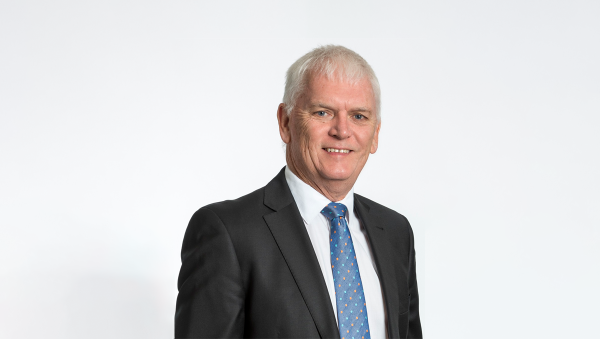Succession made easy: How BNZ found the right investment

Laura Crowe on Unsplash
Three years of planning reaps its return as Doug McKay CFInstD hands over the reins at BNZ.
Retired BNZ chair Doug McKay CFInstD calls it a textbook case in succession planning – three years in the making and hardly a ruffled feather.
McKay served nearly 12 years on the board and was chair since 2015. He retired on May 31 and the transition has been seamless with Warwick Hunt now leading the organisation.
“We were planning for my succession some three years ago. We went local and global for people who we thought could have the potential, if appointed to the board, and if they could fit all our criteria and live here in New Zealand.
“We’d get to see them operate on the board, give them a senior role, and we as a board, and NAB [National Australia Bank] as the parent, would be able to get a good understanding of their capabilities and potential to be the chair.”
McKay says if you don’t have a full and extended view of prospects then you probably haven’t done succession planning all that well. “We did everything in a timely, orderly and transparent fashion – it was something of a textbook case.”
Hunt joined the board in November 2022 and has had plenty of time to find his feet, while chairing the audit committee.
“It’s a demanding role, being the chair of a big, important organisation,” says McKay, adding that they had such strength on the board they had no reason to look externally, and the bank’s values “preferred” an internal appointment.
“Warwick is now a known quantity, and he has the skills and ability to drive the transformation required to take us to where we want to be. We have a long-term plan and he has a runway in front of him.
“Warwick and I have been very open about the future challenges at BNZ and in the banking industry in New Zealand.”
McKay’s appointment as chair in 2015 was a far different scenario. He had only three-to-six months to prepare after John Waller, who was in the role for eight years, fell ill. “That was very different to this transition.”
“As time goes on and your strategy unfolds, you are going to need to update that skills matrix and be looking to supplement your board when the opportunity presents itself with people who can add value in those new areas.”
McKay says the beauty of the BNZ board is “whoever you appoint, they are going to be of high quality”.
“Banking’s not for everybody. A lot of people would never join a bank board because they have a perception about its regulated nature. There are various factors . . . the board papers tend to be voluminous and there’s a lot of reporting and compliance obligations. I’m on a few publicly listed boards and this is way more intense.”
He says he “absolutely loved it” and it was a great privilege serving one of the oldest and most prestigious institutions in New Zealand.
“People have often said my biggest strength in being the chair of the BNZ is I’m not a banker. It’s a strange thing to say, but it’s the ability to lead the board, interact constructively with management, and create a good board culture around transparency, sharing, honesty, support and constructive criticism.”
The most obvious attribute a chair needs, he says, is the ability to change. “It’s not about having a specific technical skill set, or being a subject matter expert, or being this or that.”
For succession planning, that skills matrix needs to be continually updated because board composition changes for various reasons – some planned, some unplanned.
“You better know what skills you require generically on your board, and you have all those covered with your skills matrix and appointees. You also need good visibility of the forward strategy and plan for the business.
“I’m not talking about the annual plan – I’m talking about the five- to 10-year view of the business and the skills you’ll require as you move through that business growth strategy. You may not have them. The world is changing so fast,” he says, citing the challenges of artificial intelligence, cyber security, risk, customer experience, and a social licence to operate in an industry challenged by fraud and scams.
“There’s always the requirement in banking for strong audit capability, strong risk capability, and customer experience. We have all those skills, tools and capabilities sitting in our skills matrix and we get it reviewed every couple of years with an external board evaluation. They helped me understand the matching of the personnel with the skills matrix.
“As time goes on and your strategy unfolds, you are going to need to update that skills matrix and be looking to supplement your board when the opportunity presents itself with people who can add value in those new areas.”
“I’ve been very lucky. I’ve had to have some conversations with board members to flex their terms to create the opportunity to appoint and test out board chair succession candidates. You are moving into some sensitive areas for people.”
The three-year appointment term gives the opportunity to pause, juggle or change-out if things are not working.
“You need a shared view of the world and are focused on doing the right thing by the organisation. That means not getting too hung up on their individual circumstance and life, or their career, because it’s the business we must look after first,” he says.
“I’ve been very lucky. I’ve had to have some conversations with board members to flex their terms to create the opportunity to appoint and test out board chair succession candidates. You are moving into some sensitive areas for people.”
Effectively, that means creating some vacancies for new appointments and that needs to be communicated well enough and transparently enough, says McKay, so no one is under any misunderstanding, they know their role on the board, and they’re valued for that.
“Not every board member has the potential to step up to be the chair for various reasons. It’s being able to manage people through that disappointment.”
McKay is the chair of Vector and on the board of NAB, IAG New Zealand and Fletcher Building. He will step down from Fletcher on June 30 and says of the situation there: “On the topic of board succession, it is not the way to plan board succession and I think that’s pretty obvious.”
He admitted the results at the company had been hugely disappointing. “I’m prepared to put my hand up and take accountability for some of that.”